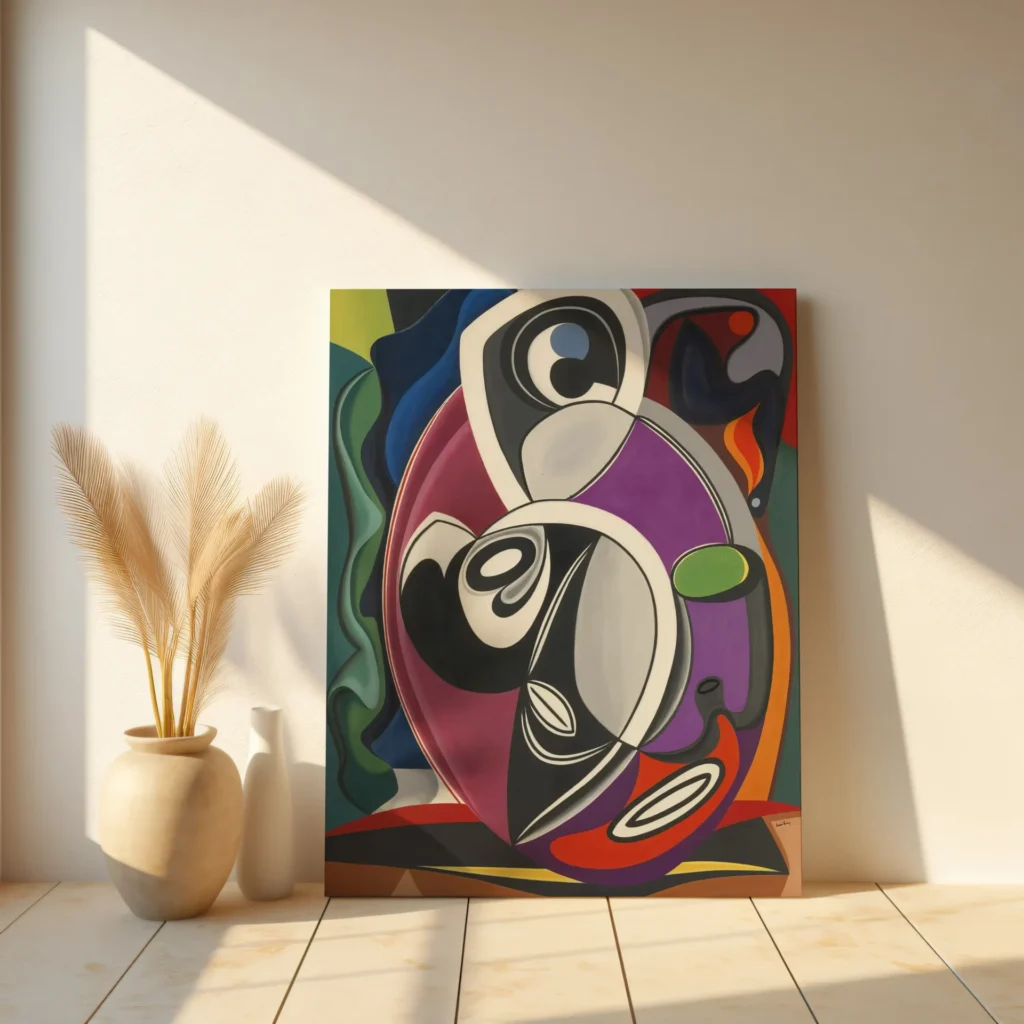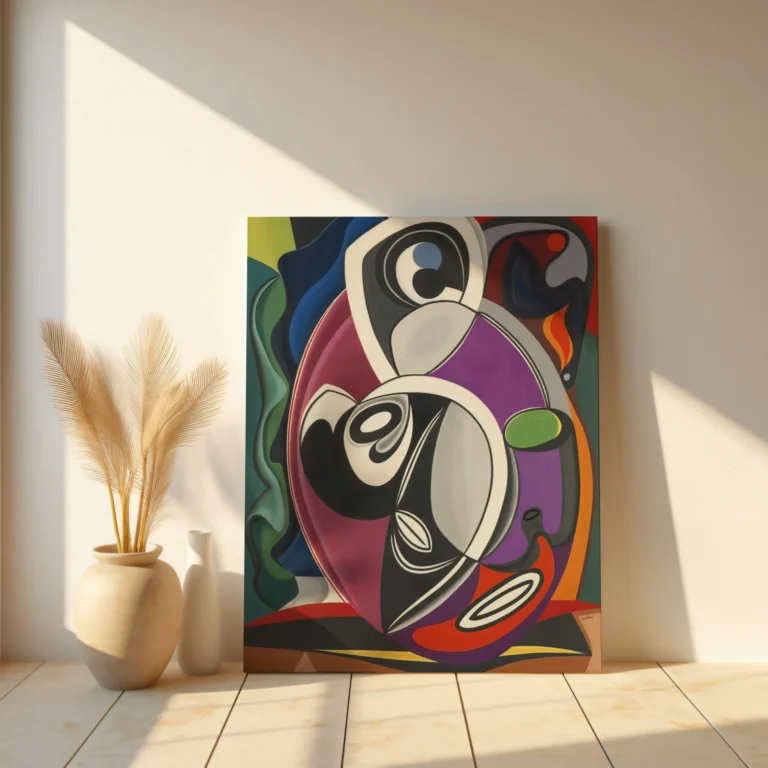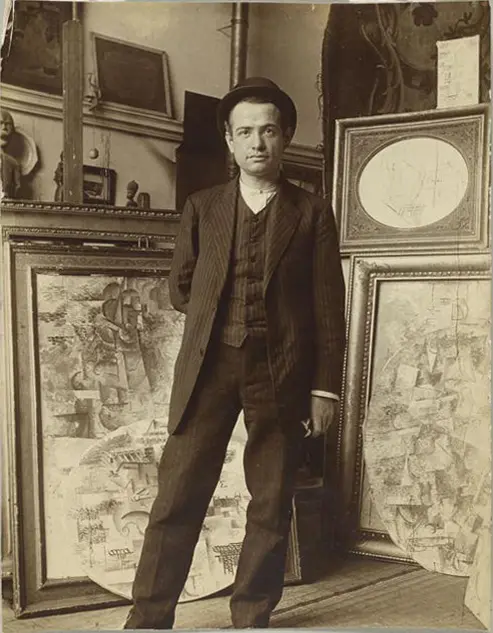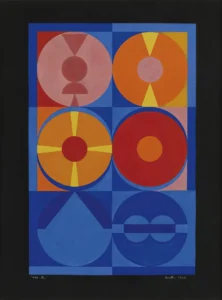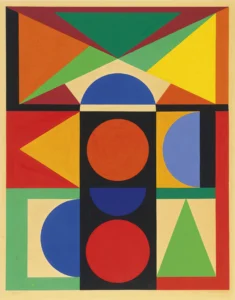Abstraction
Auguste Herbin was a transformative figure in 20th-century art, initially part of the Fauvist movement before evolving into Cubism and finally embracing geometric abstraction. His later works, marked by crisp geometric shapes and bold colors, encapsulate the essence of abstract art. Notably, his development of the 'Plastic Alphabet' system linked colors with shapes, musical notes, and letters, enriching the artistic landscape and influencing future generations of artists.
1912 - 1949
About the Artwork
Herbin’s artistic journey began in the vibrant Fauvist movement, where he mingled with luminaries such as Matisse and Derain. His time at the Bateau Lavoir, a hub of Cubist innovation, marked a significant turning point in his evolution. Moving from Cubism to a more ornate style, and then embracing organic forms, he eventually distilled his vision into pure geometric abstraction, where colors played a narratively symbolic role guided by Goethe’s color theories. Herbin's groundbreaking 'Plastic Alphabet' illustrated his quest to unify art with mathematics and music. With numerous exhibitions and foundational contributions to abstract art groupings like Abstraction-Création, Herbin's legacy as a pioneer in geometric abstraction remains relevant and vital in today's art world.
Did You Know
Liked what you see? Add it to your collection.
Enjoyed reading? Share it.
Related Artworks
... continued
Early Career and Influences
Herbin began his artistic career as a Fauve, exhibiting with artists like Matisse and Derain at the Salon des Indépendants in 1906. He later moved to the Bateau Lavoir in 1909, where he interacted with Picasso, Braque, and Gris, influencing his transition to Cubism.
Cubist and Abstract Phases
Herbin's work evolved through various phases: Cubism: His first Cubist works appeared in 1913, and he participated in the historic exhibition of the Section d’Or in 1912. Ornate Cubism: From 1917 to 1921, he moved to an ornate phase of Cubism, akin to folk art. This was followed by a more figurative style from 1922 to 1925. Organic Abstraction: In 1926, he shifted to organic, often spiral-like forms before returning to 'pure' geometric abstraction.
Geometric Abstraction
Herbin's most renowned works are from his later period, characterized by geometric forms: Flat, colorful compositions of triangles, circles, and rectangles. These works are marked by hard-edged shapes and pure, unmodulated colors. Plastic Alphabet: In 1946, Herbin developed a compositional system known as the 'Plastic Alphabet,' which involved correspondences between geometric shapes, colors, letters, and musical notes. This system was detailed in his book L’art non-figuratif non-objectif published in 1949.
Color Theory
Herbin's use of color was significantly influenced by Goethe's Theory of Colours. He chose colors for their symbolic power and contrasting effects, adding to the vibrancy and structure of his paintings.
Associations and Exhibitions
Herbin co-founded several influential groups, including the Abstraction-Création group in 1931 with Georges Vantongerloo, and the Salon des Réalités Nouvelles, where he was a regular exhibitor and member of the Comité Directeur until 1955.
Legacy
Herbin's work had a major influence on post-war abstract artists, particularly those practicing geometric abstraction. Artists such as Victor Vasarely and Jean Tinguely have cited Herbin as an inspiration for their own work. His contributions to abstract art continue to be recognized through various retrospectives and exhibitions.




